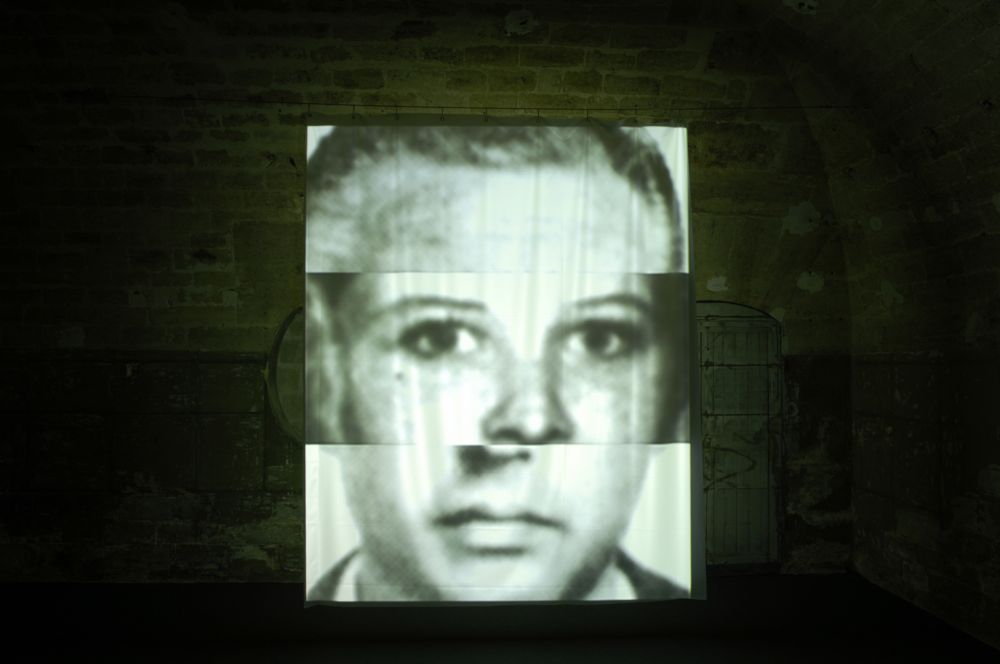By Chiara Nuzzi
Christian Boltanski
“CHANCE”
The French Pavilion at the 54th International Art Exhibition
La Biennale di Venezia
June 4th – November 27th 2011
Curator: Jean-Martin Hubert
Christian Boltanski, a leading figure in the international arts scene, will represent France at the 54th International Art Exhibition – La Biennale di Venezia with a unique and spectacular installation called “Chance”, which deals with one of those themes dear to the artist: chance, luck and misfortune, forces that fascinate and impose their law. The artist has selected the honorary director of the Georges Pompidou National Modern Art Museum, Jean-Martin Hubert, as curator.
Placed under the curatorship of Bice Curiger, Swiss art critic and historian, the 54th International Art Exhibition has chosen “ILLUMinations” as the theme for this edition. The Biennale is one of the most important forums for highlighting and disseminating current developments in the sphere of international art.
The French Institute is responsible for the general curatorship of the French Pavilion at the Venice Biennale in co-production with the National Centre for the Fine Arts (Centre National des arts plastiques / CNAP) and in collaboration with the Directorate General of Artistic Creation (Ministry of Culture and Communications) and with the exclusive patronage of Citroën. This project is the result of a commission on behalf of the French Ministry of Culture and Communication and the work will become part of the National Centre for the Fine Artsʼ collection after the Venice Biennale.
The theme of the French Pavilion
At the recent Monumenta exhibition called Personnes, an exhibition that was later installed and exposed at The Park Avenue Armory in New York and the Hangar Bicocca in Milan, Christian Boltanski demonstrated his ability to deal with universal themes, while at the same time ensuring that everyone is free to interpret his work in their own way. The artist has again chosen “Chance” as his theme for Venice. In a mobile and unstable environment, this theme is developed in a more playful and interactive way by allowing the public to play and to win with the artist. Resolutely independent of particular movements and schools of thought, Christian Boltanski deals with existential questions on a spectacular level, merging fact and fiction, in an artform that he himself refers to as classical, not in terms of its form but in terms of the themes it deals with, such as “Chance, Godʼs Law and Death”. Reflecting on the passage of time, Chance is one of the links in the chain of memory, in what can be referred to as “little” or “individual”memory, that which defines the fragile uniqueness of each person, and which form part of the immense collective work The Archives of the Heart (Les Archives du Coeur). Since 2005, Christian Boltanski has been collecting recordings of heartbeats from all over the world, in order to attempt the impossible: to collect “the heartbeat of everyone in the world”. A truly universal project, the recordings will be preserved on the Japanese island of Teshima on the Seto Inland Sea, thanks to the support of a sponsor and is open to the public. In this spirit of allegorical and utopian works, Christian Boltanski “sold his life” (i.e. a continuous video recording of his work and activities in his studio) to a collector in Tasmania. This lifetime annuity was granted in an attempt to create yet another permanent installation, in what the artist refers to as “his deal with the devil”.
The work presented at Venice is optimistic in its reflection on chance and destiny; the chance of birth against the chance of death. Is everything pre-determined? Who controls destiny? Has our path already been decided? Is God present or absent?
At the entrance to the pavilion, the visitor is invited to sit on one of the wooden chairs. A voice whispers to him. Each chair “speaks” in a different language uttering the words “Is this the last time?” Is this a message of hope? Or a troubling announcement?…
The interior of the pavilion is criss-crossed by a moving walkway, that travels at great speed and upon which hundreds of photos of childrenʼs faces have been printed. The walkway stops randomly and one of the childrenʼs faces is lit up and an alarm sounds. Chance has picked out one child. The process begins all over again, until the walkway stops again and the alarm signals Chanceʼs next choice. In each of the two side rooms, a clock with luminous numbers counts up the worldʼs population. The panel on the left records, in real-time, the number of births and the panel on the right, the number of deaths. Every evening at midnight, they provide the figures of the day. The number of births is always higher than the number of deaths! Every day witnesses the victory of life over death. In the third room, there is a large mural work consisting of a huge video screen on which various images of different segments of human faces are projected. By
pressing on a button, the visitor can pause the images. The faces are made up of three random sections creating strange even monstrous faces, the fruit of a wild imagination. If the visitor is lucky, the three sections of the face match and he wins the image shown.
Throughout the duration of the Biennale, a version of this work will be available onwww.boltanski-chance.com. Lucky winners will receive a surprise sent personally by the artist.
Images:
Être à nouveau, 2005
Vidéo noir et blanc
Dimensions variables
Vue de l’exposition Prendre la parole, Galerie Marian Goodman, Paris, 2005
Courtesy de l’artiste et galerie Marian Goodman, Paris / New York
Photographie : Marc Domage York












